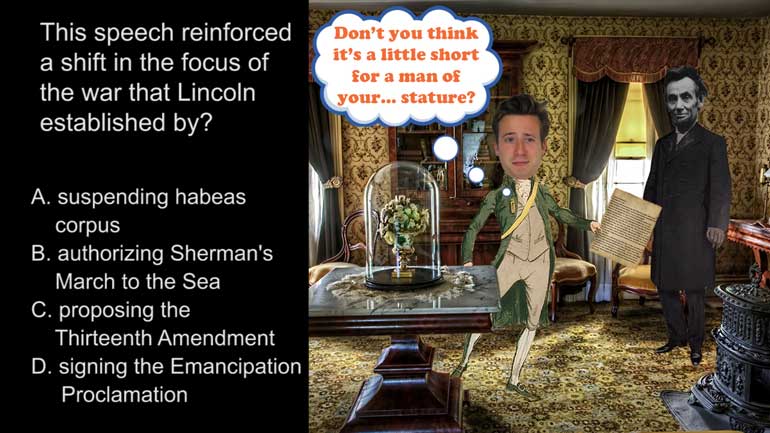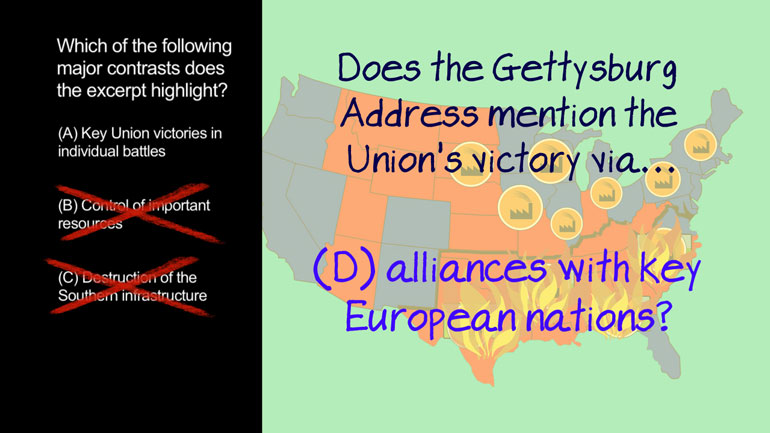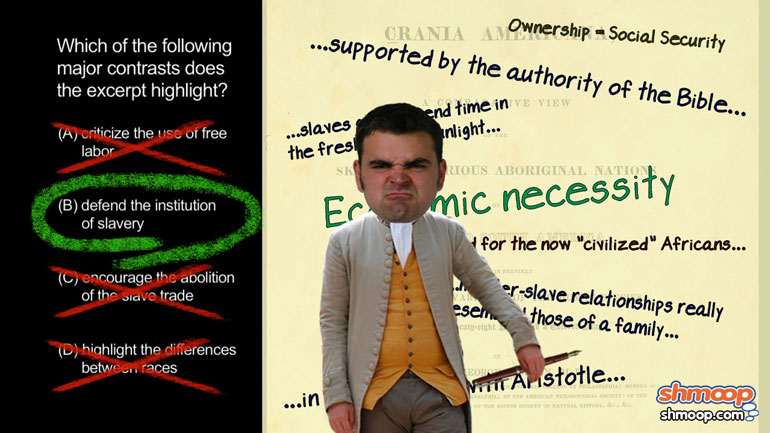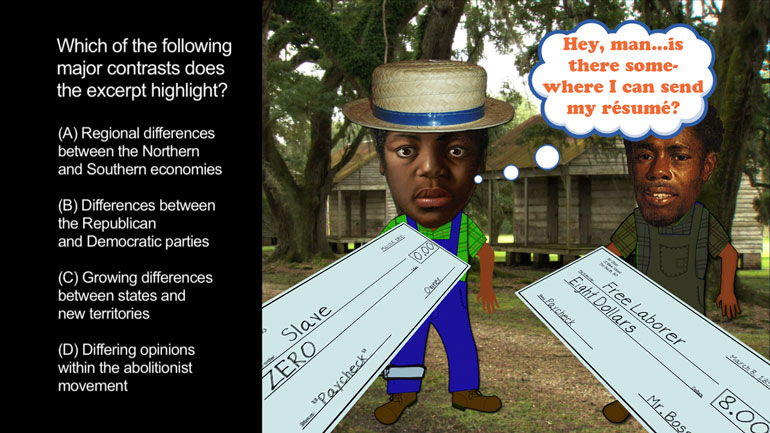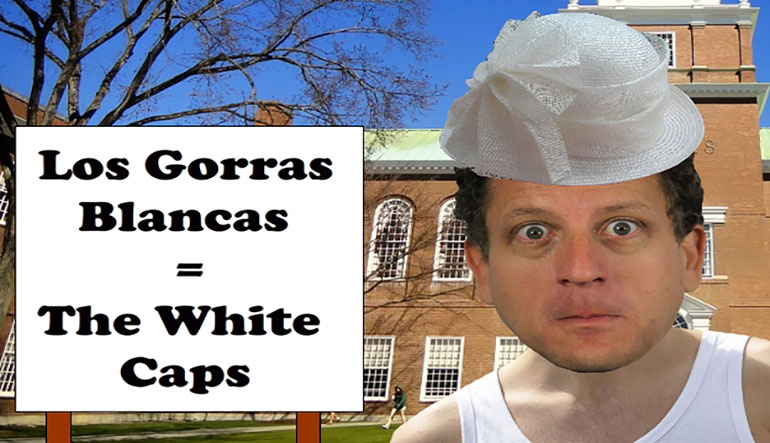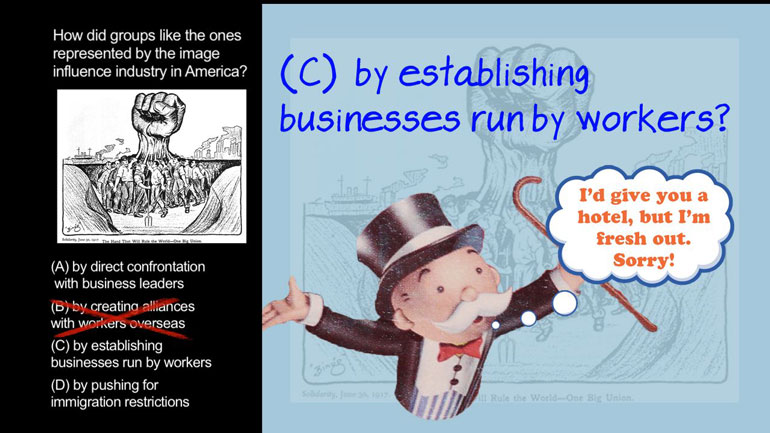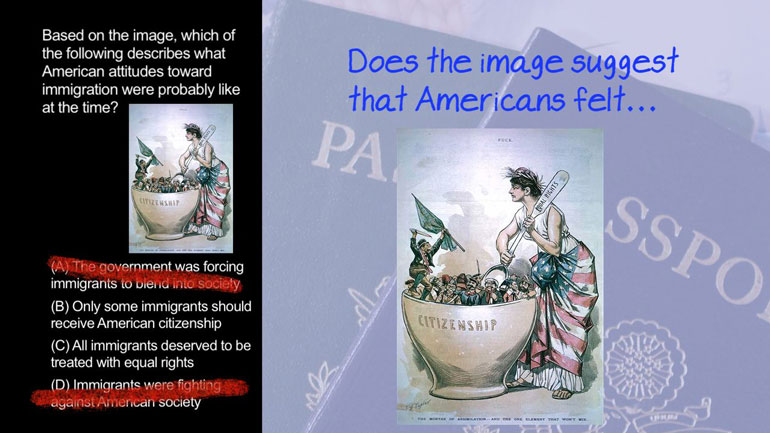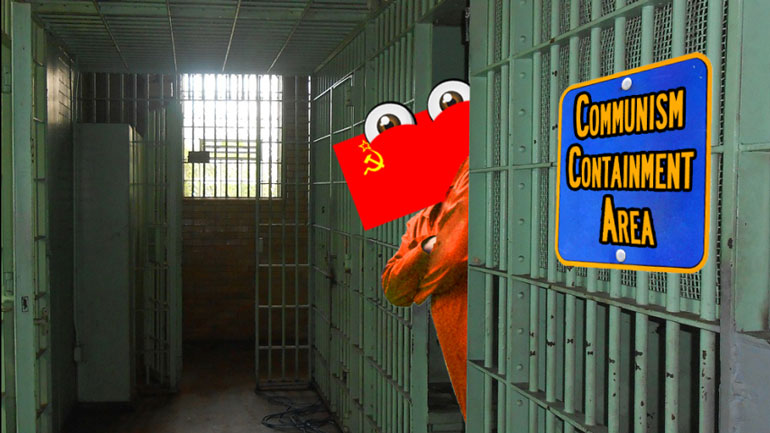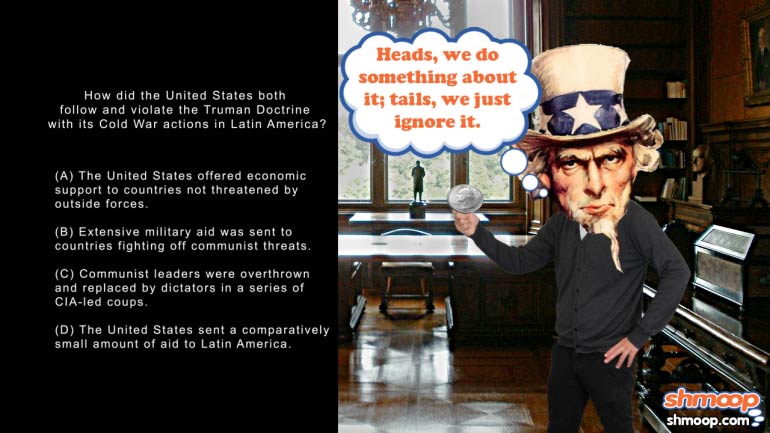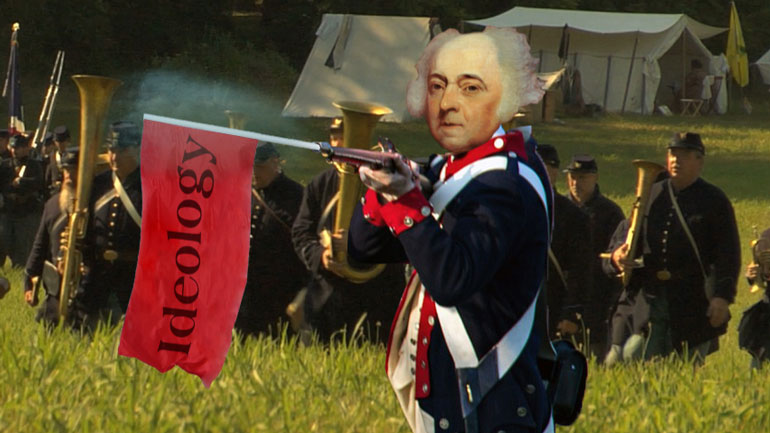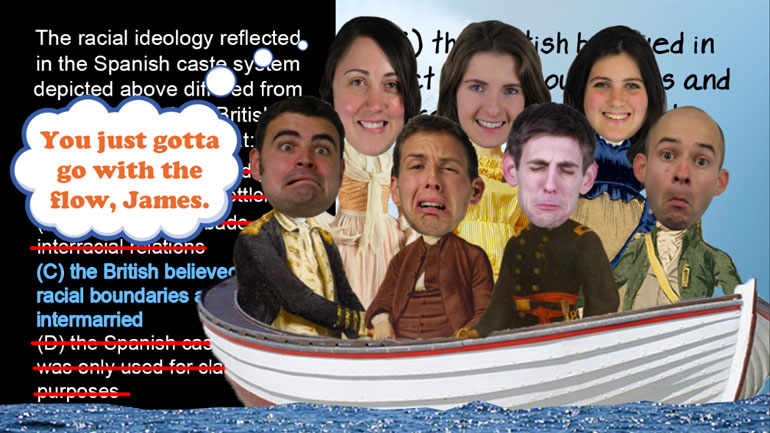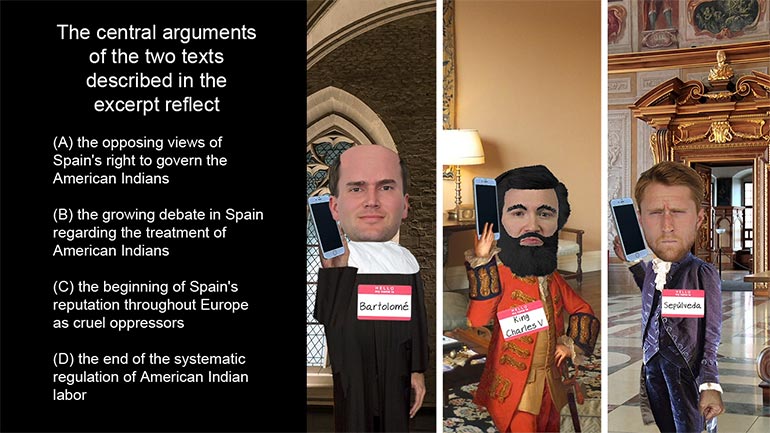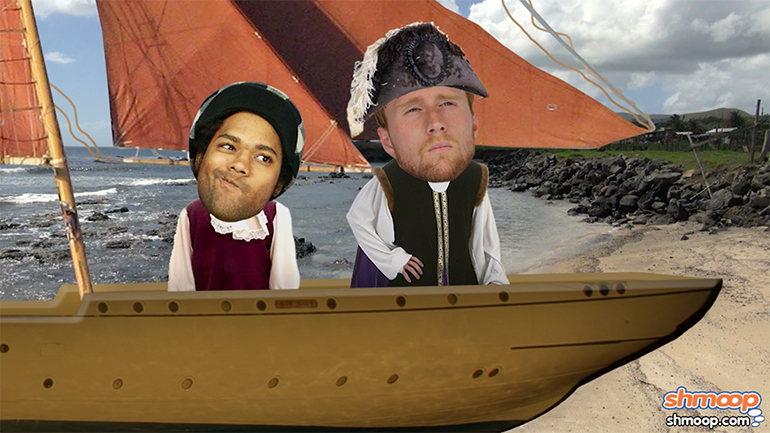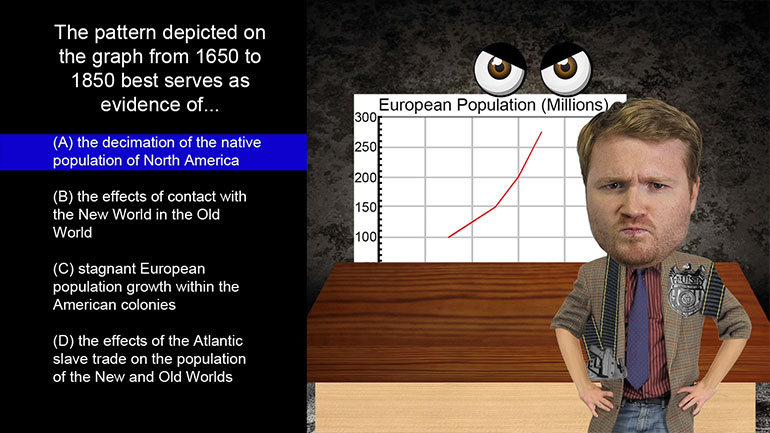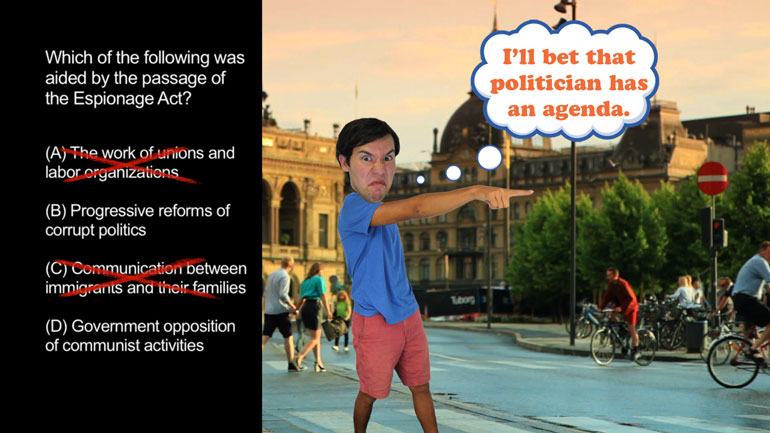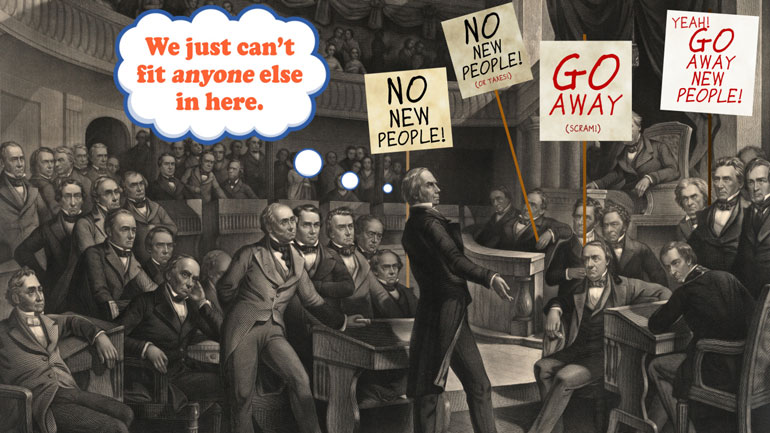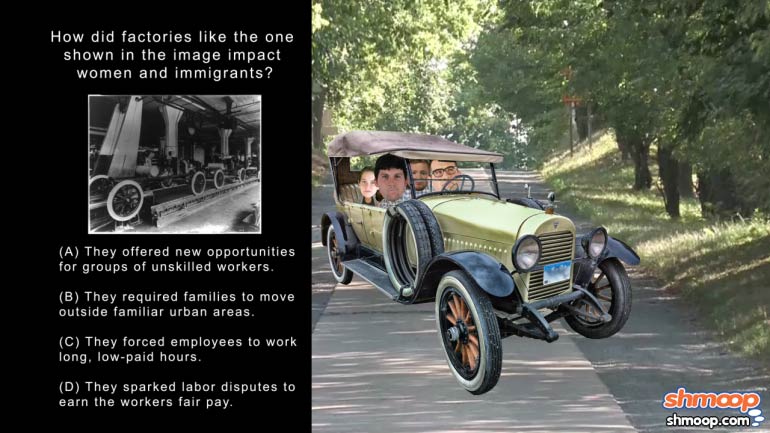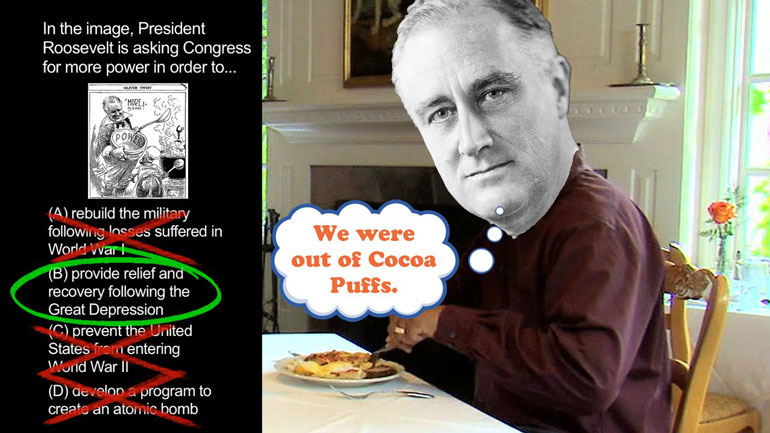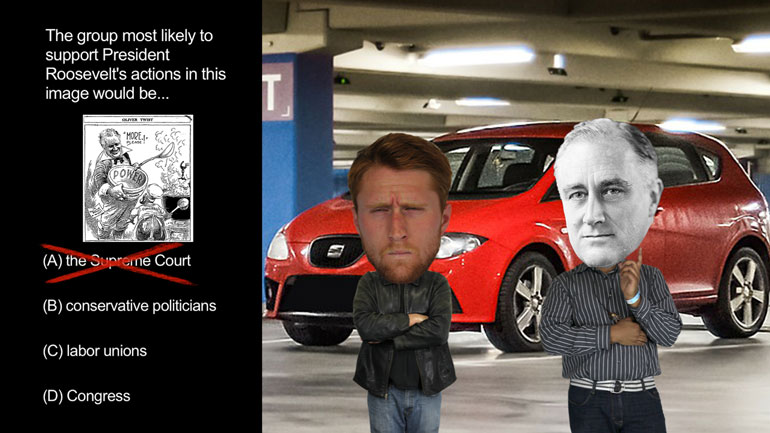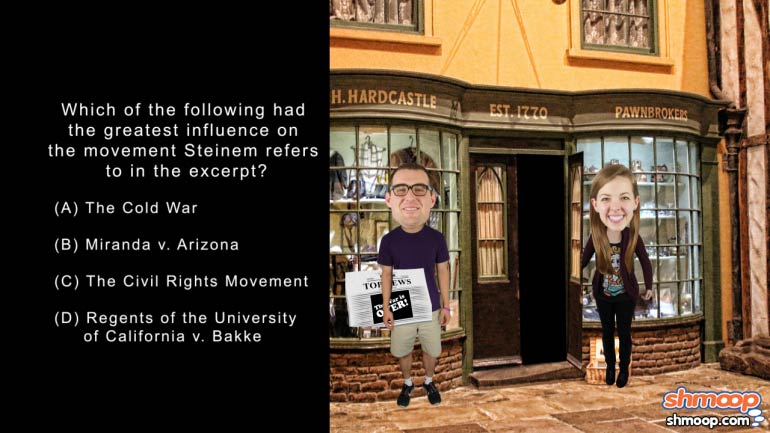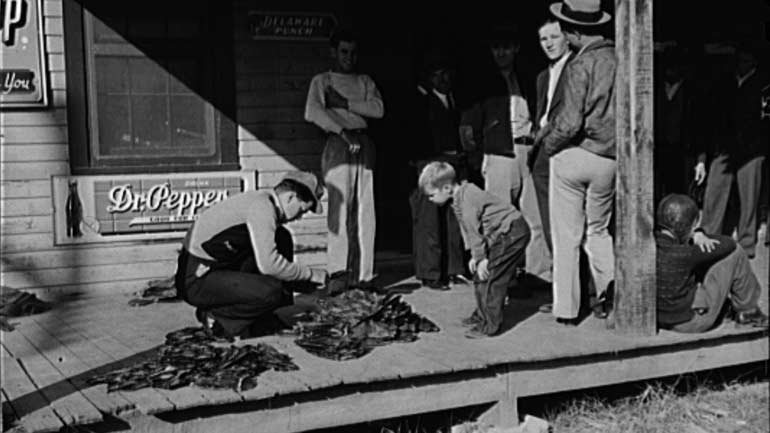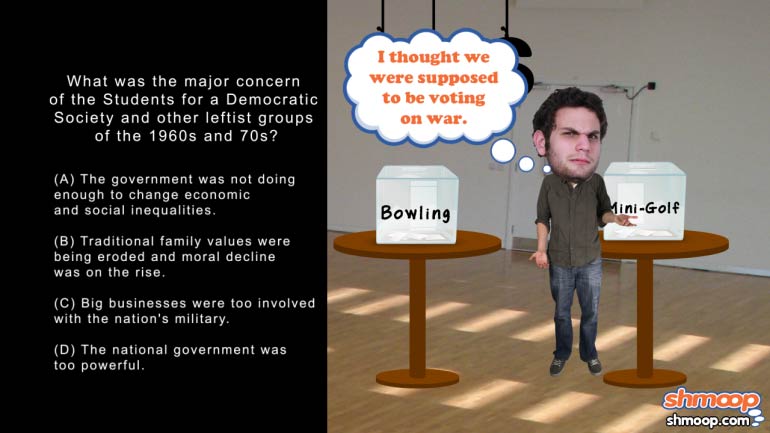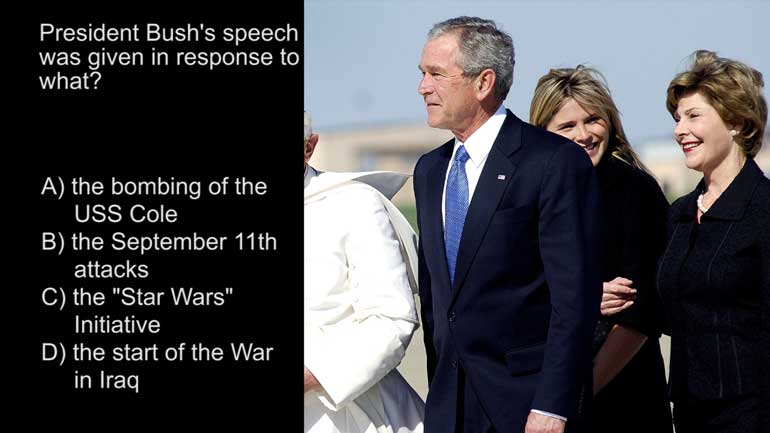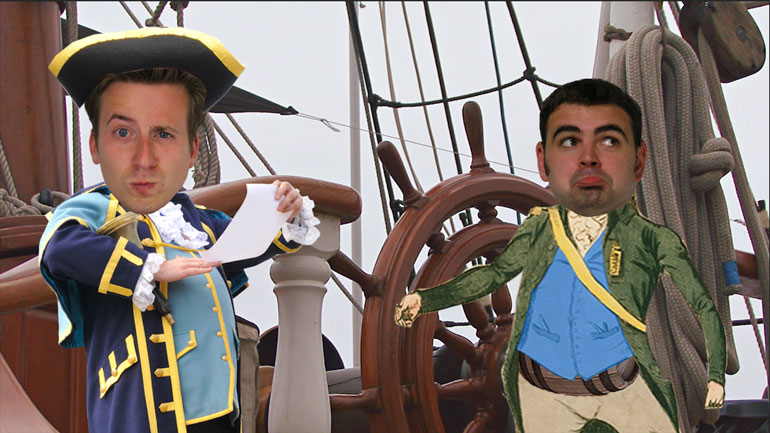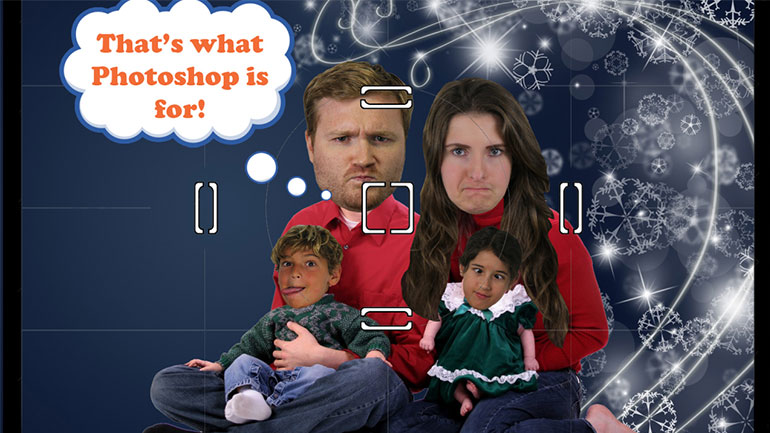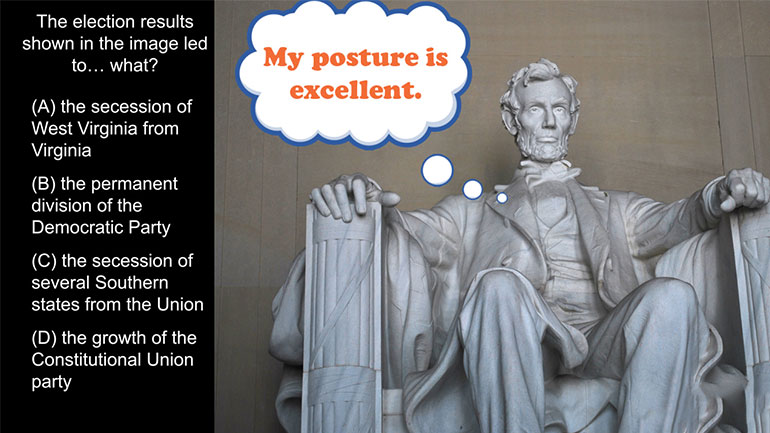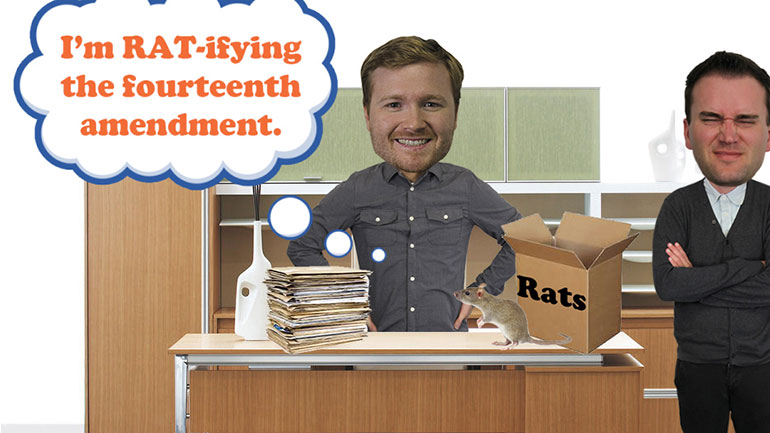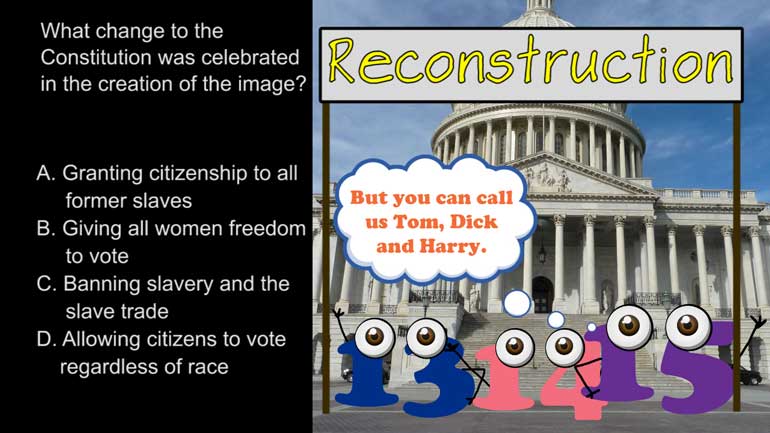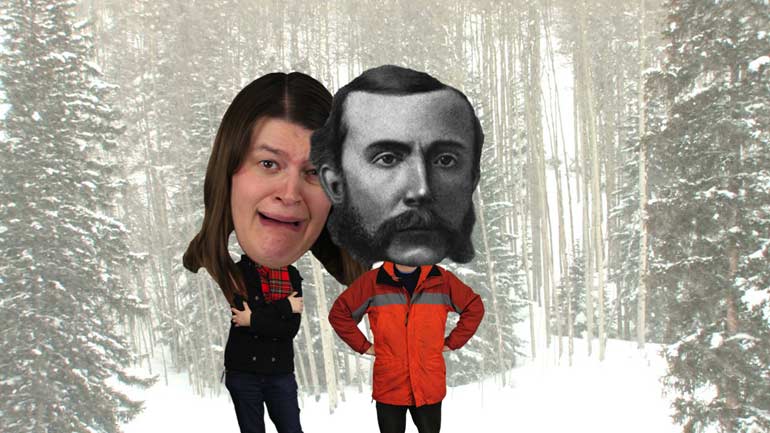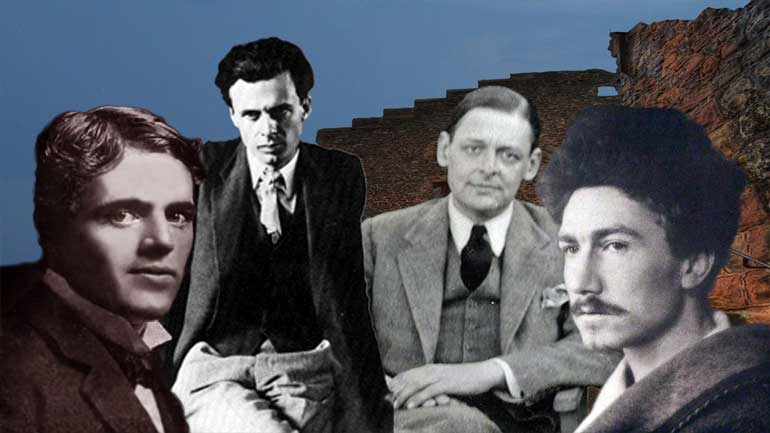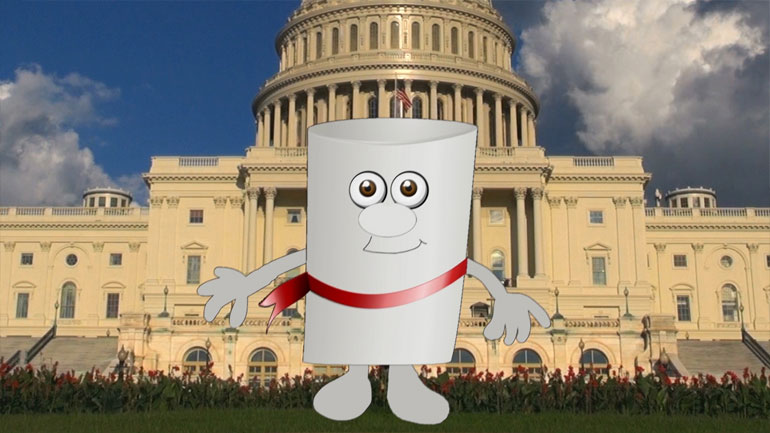ShmoopTube
Where Monty Python meets your 10th grade teacher.
Search Thousands of Shmoop Videos
Test Prep Videos 641 videos
AP U.S. History Exam 2.45. The journey shown on the map was an example of...what?
AP U.S. History Exam 2.26. This speech reinforced a shift in the focus of the war that Lincoln established by...what?
What did the Spanish messengers bring with them to North America? Hint: you probably wouldn't be thrilled to get this for your next birthday.
AP U.S. History Diagnostic 22 176 Views
Share It!
Description:
AP U.S. History Diagnostic 22. Which established foreign policy was the National Security Council Report used to solidify?
Transcript
- 00:00
[ musical flourish ]
- 00:02
And here's your Shmoop du jour, brought to you by the National Security Council,
- 00:07
the country's leading supplier of security guards.
- 00:11
And take a look at this excerpt.
- 00:12
[ mumbles ]
Full Transcript
- 00:19
All right, and the question:
- 00:21
Which established foreign policy was the National Security Council Report used to solidify?
- 00:27
And here are your potential answers.
- 00:28
[ mumbles ] All right.
- 00:33
Okay, all right. What clues can we glean
- 00:35
from this National Security Council Report? Hmm?
- 00:38
It says that the act of force is "a last resort
- 00:42
for a free society." Right there.
- 00:44
And should be only be allowed
- 00:45
"when another society seeks to impose its will" on others.
- 00:50
Different "will."
- 00:51
So we need to figure out which established
- 00:53
foreign policy in the answers benefitted
- 00:56
from this new forceful rationale.
- 00:58
Was the National Security Council Report used
- 01:01
to solidify A - intervention in Vietnam?
- 01:04
Well, that seems like it could work, but take a look at the question again.
- 01:07
We're looking for an established
- 01:10
foreign policy, and this report came out in 1950.
- 01:12
We didn't "intervene"
- 01:14
in Vietnam with ground troops until 1965.
- 01:17
So that eliminates A.
- 01:19
Was this report used to back up B -
- 01:21
key points of the Monroe Doctrine?
- 01:24
[ chuckles ] The Monroe Doctrine was about European
- 01:26
intervention in North and South America
- 01:29
during the 1800s.
- 01:31
Long time ago.
- 01:32
The National Security Council Report was based on the Truman Doctrine,
- 01:36
which was a U.S. policy designed to stop
- 01:38
Soviet expansion during the Cold War.
- 01:41
Monroe you didn't. It's not B, either.
- 01:44
Could the National Security Council Report have been used to support C -
- 01:48
isolation following World War II?
- 01:50
Well, quite the opposite, actually.
- 01:52
The emphasis on intervention over diplomacy pushed the U.S.
- 01:56
far away from the isolationist
- 01:58
policies it had held after World War I.
- 02:01
So that forces out C, as well.
- 02:03
Which means that this report was used to solidify D -
- 02:06
Cold War containment of communism.
- 02:09
The policy of containment designed to prevent the spread
- 02:11
of Communism was a big priority at the start of the Cold War.
- 02:14
By detailing specific situations and cases where
- 02:17
force could be used, the National Security Council Report
- 02:20
solidified the idea of containment in a practical sense.
- 02:23
So D is the correct answer.
- 02:25
When it was first published in 1950, the NSC Report was
- 02:28
classified top secret,
- 02:30
and it wasn't made public until 1975.
- 02:33
Even the best-sealed containers have an expiration date.
- 02:36
Yeah. Remember that "best if used by" thing?
- 02:39
Well, maybe this wasn't that.
- 02:40
[ crash ]
Related Videos
Ever heard of a "living document"? They eat and breathe just like the rest of us! They even walk around on their own two legs. Okay, fine—maybe t...
If the Puritans had gotten their way, religion would play a much larger role in lawmaking these days. Want to know more? Watch the video for all th...
What happened between the creation of the Articles of Confederation and the ratification of the current U.S. Constitution? This video analyzes the...
The Modernists thought the world had a lot of problems, and they were intent on fixing them—or at least talking about fixing them. Unfortunately,...
This video explains Federalism and the quest for a fair balance between state and national power. It covers the progression and compromises of Fede...

